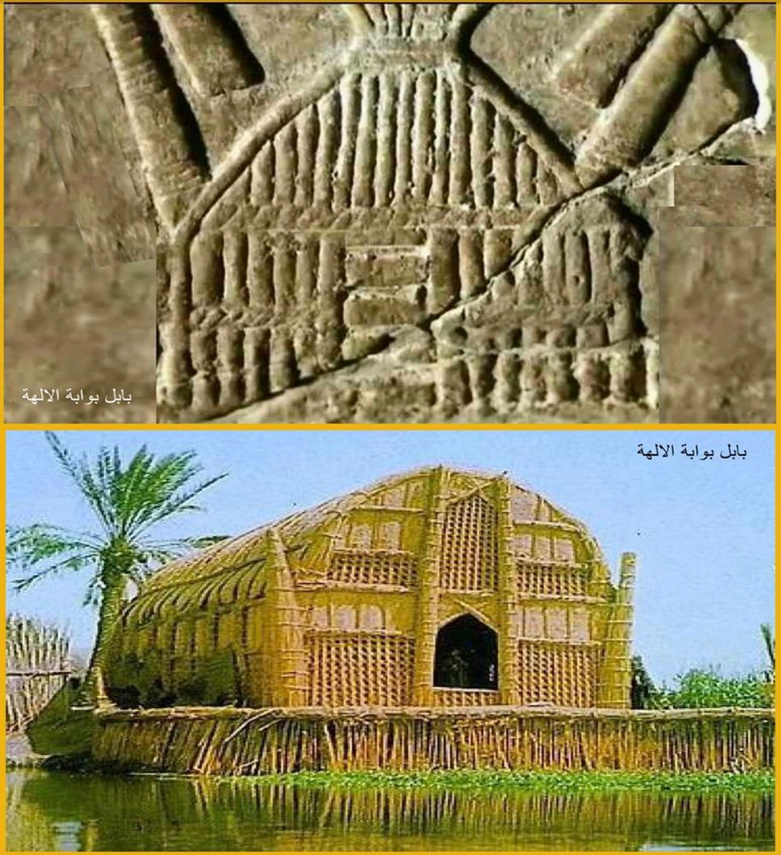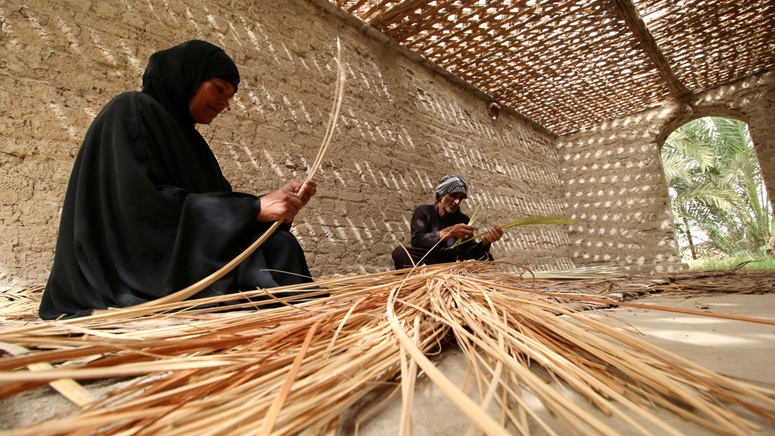Sumerian reed houses

Murals from Mesopotamia, showing Sumerian reed houses dating back more than 5,000 years.
Since the emergence of the Sumerian civilization in southern Iraq in the sixth millennium BC, its clay tablets indicate the golden features of the “Reed Host”, a beautiful folkloric building, one of the wonderful artistic monuments in the marshes region.

This host has a great status among the residents of the region, and it is considered a symbol of generosity and hospitality, a heritage that has remained steadfast over the years despite the wars and drought that its people have experienced.
Climate fluctuations forced the inhabitants of the marshes region - which was included in the World Heritage List by UNESCO in 2016 - to have their homes made of reeds.

To build the host, the people of the tribe collect the reeds that are abundant in the depths of the marshes with the help of skilled workers, then sprinkle the reeds with water and clean their peels. After that, they are divided into groups. The long, huge, curved bundles of them are called “alum”, which are pillars whose thick ends are placed in holes corresponding to their counterparts in The other end, and intertwined with each other in the ceiling.
These reed houses are still being built to this day, in the same way the Sumerians built their houses thousands of years ago!
Source: websites

